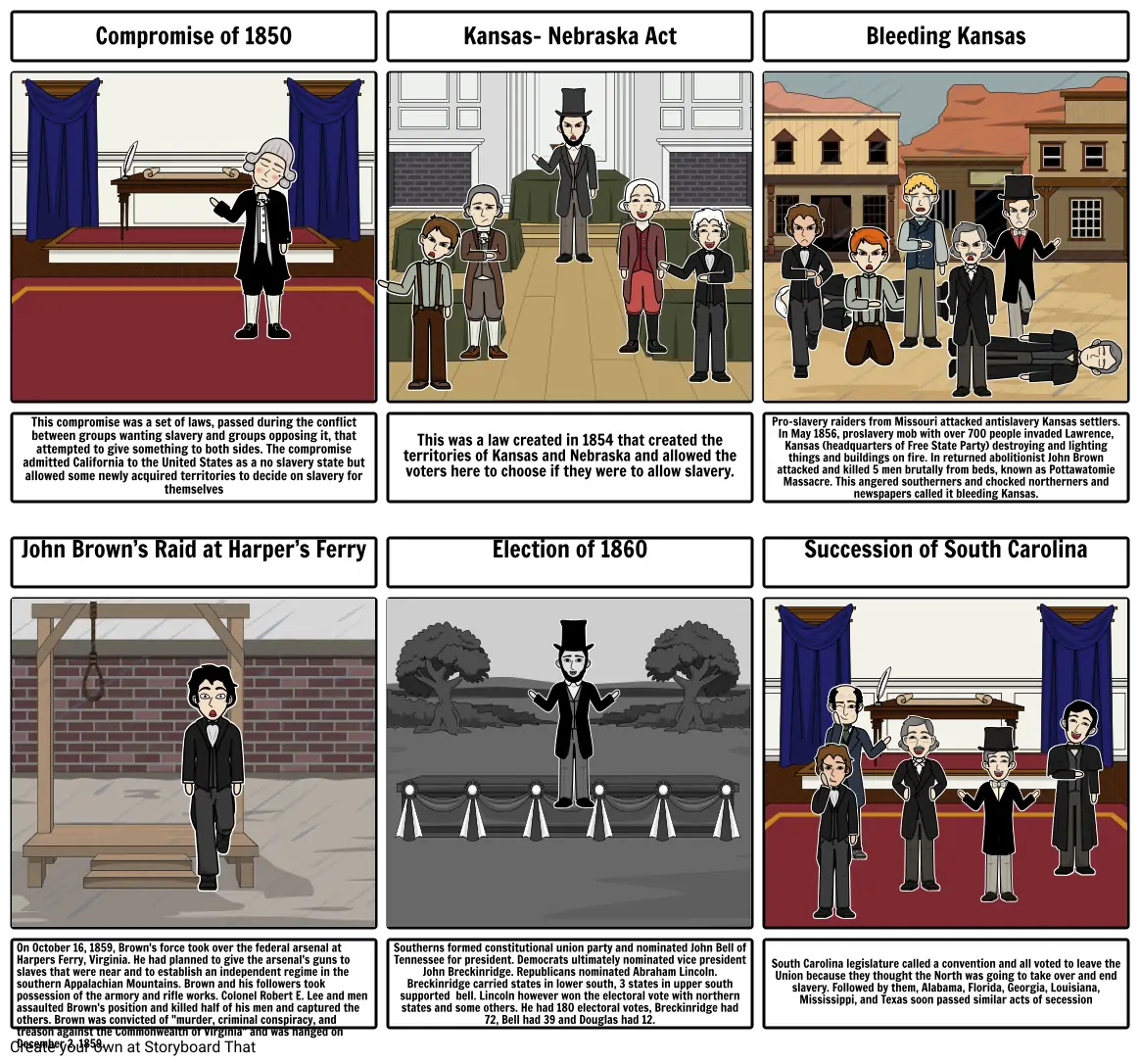Crisis of Union Storyboard

Storyboard Text
- Compromise of 1850
- Kansas- Nebraska Act
- Bleeding Kansas
- This compromise was a set of laws, passed during the conflict between groups wanting slavery and groups opposing it, that attempted to give something to both sides. The compromise admitted California to the United States as a no slavery state but allowed some newly acquired territories to decide on slavery for themselves
- John Brown’s Raid at Harper’s Ferry p.p1 {margin: 0.0px 0.0px 13.0px 0.0px; font: 13.0px Helvetica}
- This was a law created in 1854 that created the territories of Kansas and Nebraska and allowed the voters here to choose if they were to allow slavery.
- Election of 1860 p.p1 {margin: 0.0px 0.0px 13.0px 0.0px; font: 13.0px Helvetica}
- Pro-slavery raiders from Missouri attacked antislavery Kansas settlers. In May 1856, proslavery mob with over 700 people invaded Lawrence, Kansas (headquarters of Free State Party) destroying and lighting things and buildings on fire. In returned abolitionist John Brown attacked and killed 5 men brutally from beds, known as Pottawatomie Massacre. This angered southerners and chocked northerners and newspapers called it bleeding Kansas.
- Succession of South Carolina p.p1 {margin: 0.0px 0.0px 13.0px 0.0px; font: 13.0px Helvetica}
- On October 16, 1859, Brown's force took over the federal arsenal at Harpers Ferry, Virginia. He had planned to give the arsenal's guns to slaves that were near and to establish an independent regime in the southern Appalachian Mountains. Brown and his followers took possession of the armory and rifle works. Colonel Robert E. Lee and men assaulted Brown's position and killed half of his men and captured the others. Brown was convicted of "murder, criminal conspiracy, and treason against the Commonwealth of Virginia" and was hanged on December 2, 1859.
- Southerns formed constitutional union party and nominated John Bell of Tennessee for president. Democrats ultimately nominated vice president John Breckinridge. Republicans nominated Abraham Lincoln. Breckinridge carried states in lower south, 3 states in upper south supported bell. Lincoln however won the electoral vote with northern states and some others. He had 180 electoral votes, Breckinridge had 72, Bell had 39 and Douglas had 12.
- South Carolina legislature called a convention and all voted to leave the Union because they thought the North was going to take over and end slavery. Followed by them, Alabama, Florida, Georgia, Louisiana, Mississippi, and Texas soon passed similar acts of secession
Over 30 Million Storyboards Created

